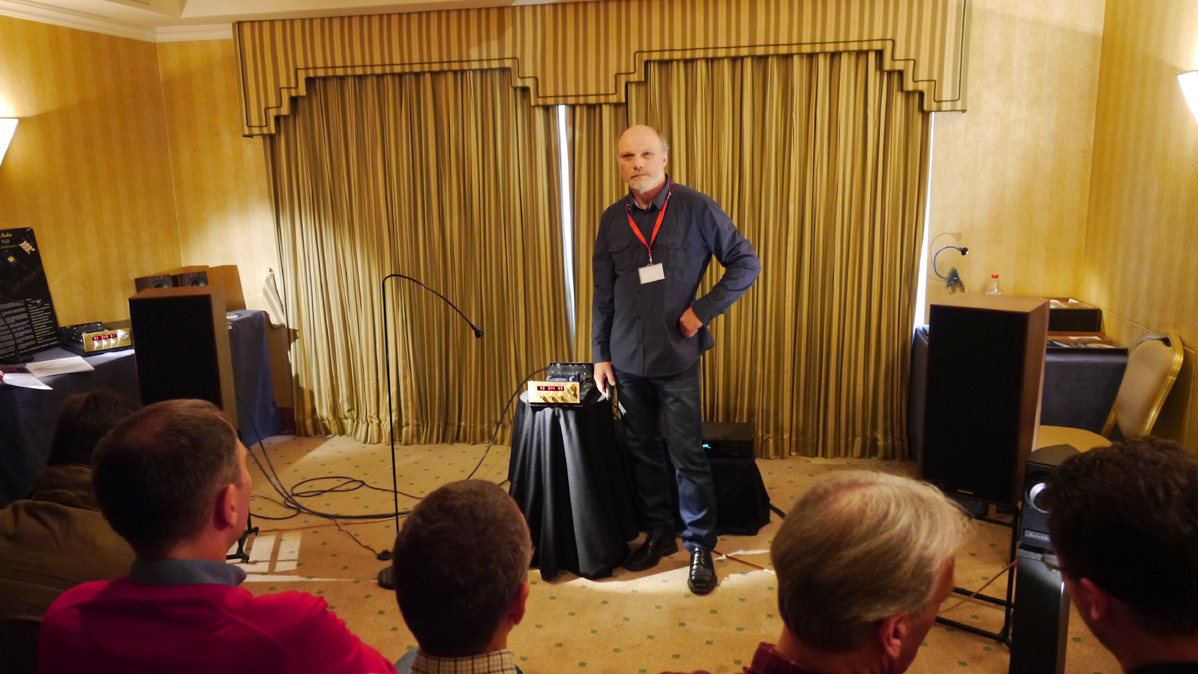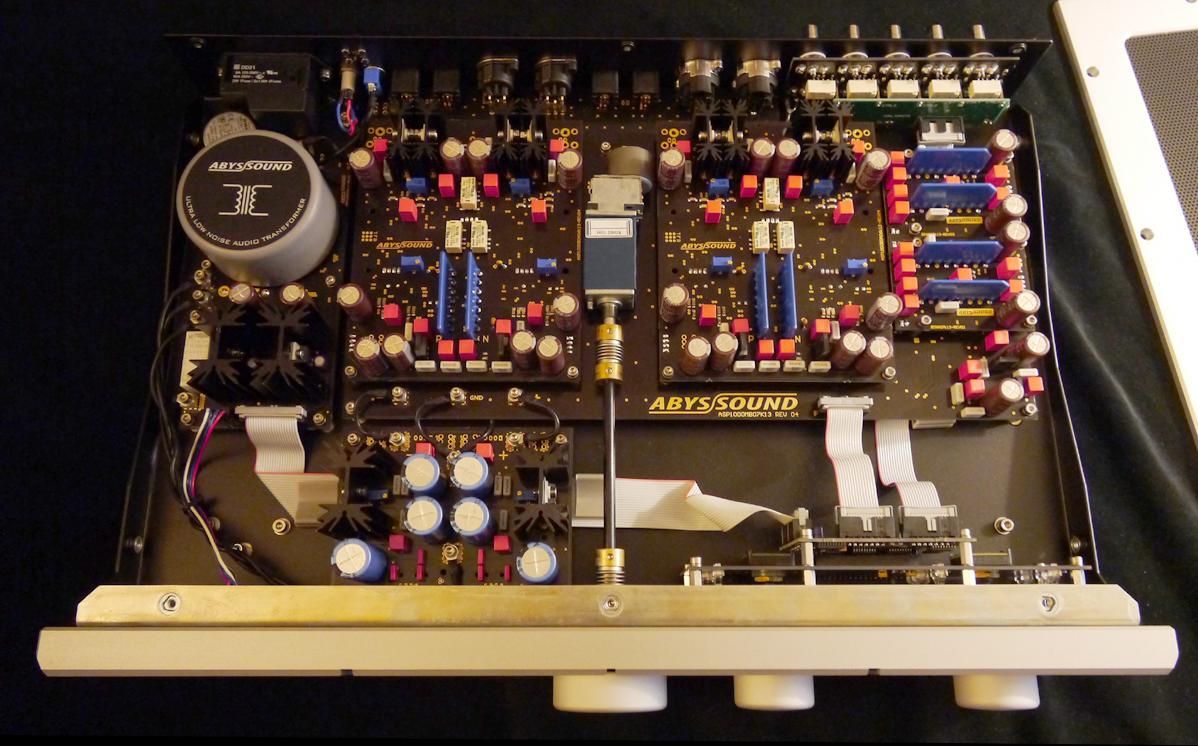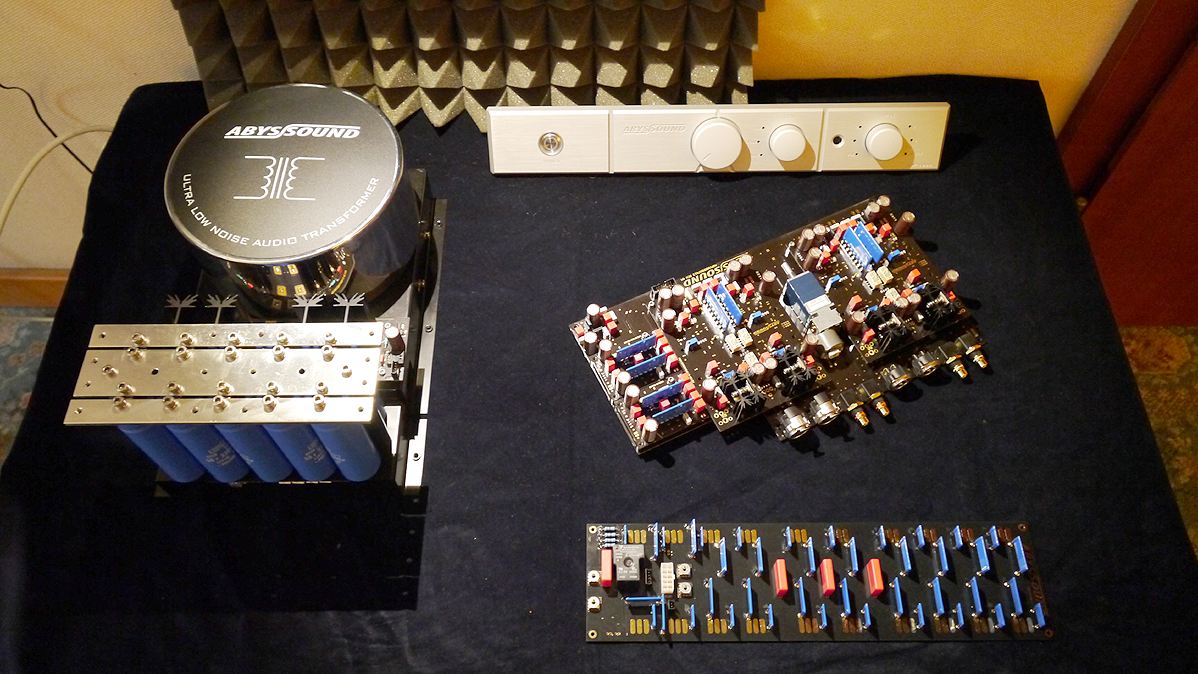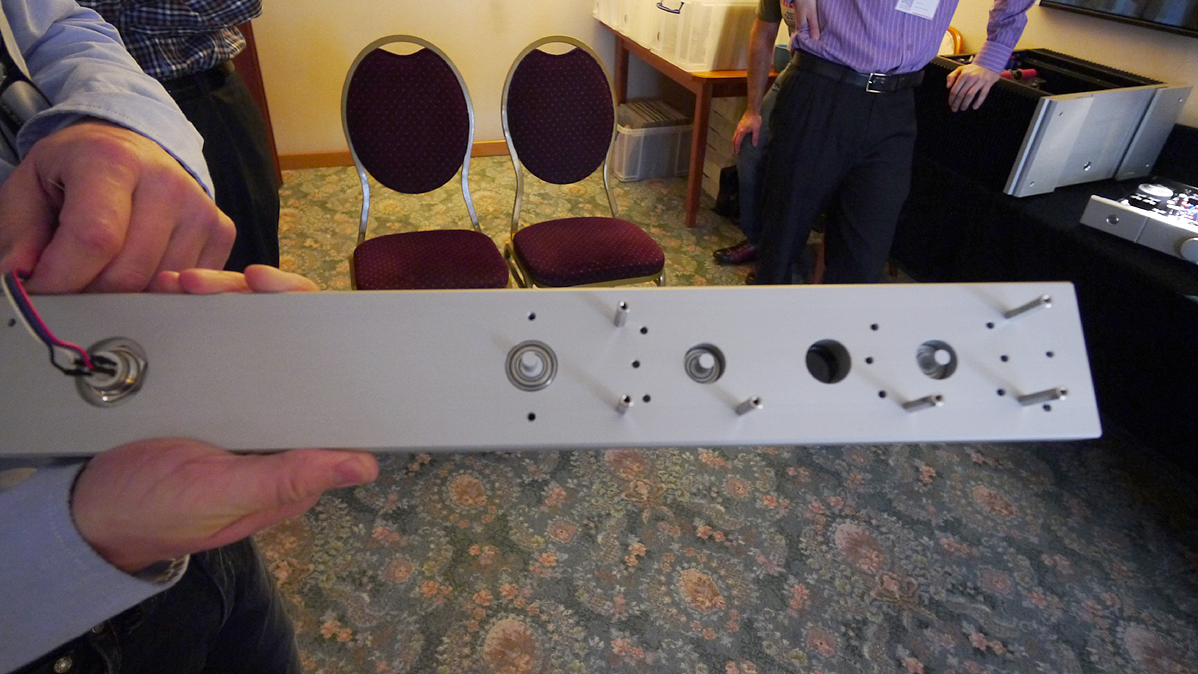 |
Part 1 - domestic brands.
One of Poland's best-known brands abroad must be Ancient Audio whose Jarek was born with a last name unpronounceable to us heathens: Waszczyszyn. But that shouldn't stop us. As Jarek wrote a few days prior to the show, "I would like to introduce you to the premiere of my latest product, a speaker processor. We developed a dedicated chip applying a unique speaker modeling method. First trials were made with our Lektor Air CD player playing processor between transport and DAC. This version will be offered as an upgrade for our Lektor IV, V, Air, Prime, Grand and Grand SE models.
|
|
"Just today I finished the standalone product, the P-3 digital speaker processor/preamplifier. A version with DAC function will also become available. How does it work? There are many speaker/room acoustic correction devices already. They take a measurement of the speaker's in-room performance and apply a mirrored correction curve to it. My processor is different. It creates a mathematic model of the speaker to deal with the root cause of its error, not to correct the final response. How does it sound? I hope that you will hear the effect personally. A few friends testing it suggest that it should become an obvious part of any hifi system.
|
 |
"How much does it cost? The P-3 will retail for €10'000 in its basic version. I will sell also the pure chip to other audio companies as OEM. I made lots of trials with low-end devices like computer speakers or even a cheap TV set. The sound improvement is huge for those too. In such a case of mass production, the processor could end up costing around the price of a local bus ticket."
|
 |
As I learnt in person, the P-3 processor chip is a 32-bit word 64 calculator which will be coded for 250 different popular loudspeakers. That seems conceptually related to how Devialet's SAM firmware compensates for specific speaker models which have been measured by the company. Jarek's algorithms are claimed to account for driver diaphragm size and composition, damping, enclosure resonances, crossover amplitude/phase and more. How exactly he determines what's 'wrong' with for example a specific driver material to create a correction for it is a big mystery. His comment that for very best results, adjustments would still be made in situ and by ear seem to work against his core claim that for this approach, in-room measurements are not required. Very clear meanwhile was his need to branch out of his company's core focus on expensive tube CD players sans USB and costly valve amps. Where those products aim at a niche audience for which one expects very limited sales, the concept of a 'universal' corrector that's applicable even to the tiny drivers built into television sets should have far broader market potential if Ancient Audio can build the right connections and land a juicy OEM contract.
|
 |
AbysSound felt like a very serious brand primed for export business. Had Marja & Henk's recent review of their ASX-2000 flagship amplifier suggested as much, seeing their product at the show merely confirmed it.
|
 |
Above we look inside their ASP-1000 linestage preamplifier of which a review is planned. Its Marantz/CEC/BMC-style sealed vertically arrayed blue modules perform bipolar voltage gain. More guts follow...
|
 |
|
 |
... and here is the back of the preamp panel to show off the dual ball bearings for the volume control's silky smooth action; and the single ball bearings for the other two knobs.
|
 |
The company had also brought a prototype of their forthcoming class A/B high-power integrated amp which will have options for phono and DAC cards.
|
 |
|

|

|